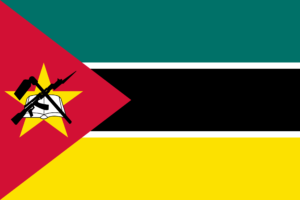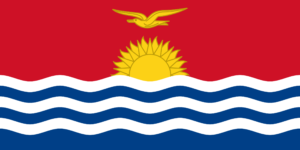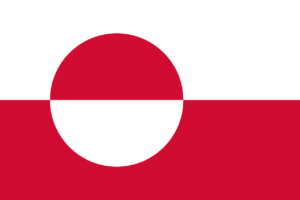

X
This site uses cookies. By continuing to use this site you agree to our use of cookies. To find out more, see our Privacy Policy and Cookie Policy.

Think of an iconic flag. You’re probably thinking of the stars and stripes of the USA or the Union flag. You probably don’t realise it, but the world is a treasure trove of flags representing diverse cultures and identities. In this blog post we’ll look at some of the lesser-known flags of the world.
 The flag of Bhutan features a bi-colour background, halved diagonally from top-right to bottom-left. The upper half is yellow and the lower is orange. A white dragon outlined in black is centred on the flag. A norbu, or jewel, is clasped in each of the dragon’s claws.
The flag of Bhutan features a bi-colour background, halved diagonally from top-right to bottom-left. The upper half is yellow and the lower is orange. A white dragon outlined in black is centred on the flag. A norbu, or jewel, is clasped in each of the dragon’s claws.
The vibrant orange and yellow hues represent the country’s spiritual and civil traditions. The magnificent Chinese dragon is the Dragon King of Bhutan – the country’s protector and guardian. It lies equally over the two coloured halves. This symbolises the equal importance of both traditions. The jewels in the dragon’s claws represent the wealth and prosperity of Bhutan.
 The flag of Mozambique consists of three horizontal stripes of teal-green, black and yellow. The black stripe is outlined top and bottom in white. On the left there is a red triangle with a yellow five-pointed star. Layered atop the yellow star is a white book, with a black hoe and Klashnikov rifle with bayonet crossed over it.
The flag of Mozambique consists of three horizontal stripes of teal-green, black and yellow. The black stripe is outlined top and bottom in white. On the left there is a red triangle with a yellow five-pointed star. Layered atop the yellow star is a white book, with a black hoe and Klashnikov rifle with bayonet crossed over it.
The flag’s colours are symbolic. The teal-green represent the landscapes and agriculture of the country. The black symbolises the African continent, and the yellow signifies the country’s rich mineral resources. The red symbolises the blood shed in the struggle for independence. The star represents the international solidarity of the people of Mozambique.
Education is important to the Mozambican people, and this is represented by the open white book. The hoe symbolises the country’s agriculture and the rifle stands for defense of the nation. The design of this flag showcases the nation’s past struggles and its hopeful journey towards harmony.
 The Republic of Kiribati is an island in Oceania, in the central Pacific Ocean. The bottom half of its flag has three blue and three white wavy stripes. These represent the Pacific Ocean and the three archipelagoes of Gilbert, Phoenix and the Line Islands.
The Republic of Kiribati is an island in Oceania, in the central Pacific Ocean. The bottom half of its flag has three blue and three white wavy stripes. These represent the Pacific Ocean and the three archipelagoes of Gilbert, Phoenix and the Line Islands.
Above this is a red background with a gold sun with 17 rays, rising over the sea. The 17 rays represent the 16 Gilbert Islands and the one remote, raised coral island, Banaba. A gold frigatebird flies over the sun. The bird symbolises power over the sea and freedom, along with paying homage to the country’s birdlife and maritime heritage.
 The flag of Nepal stands out for its unconventional shape. The Nepalese flag is the only non-rectangular national flag in the world. It consists of two juxtaposed triangles. They are a crimson colour with a deep blue outline. A white emblem of a crescent moon with eight rays appearing from it is in the top triangle. A white image of a twelve rayed sun is in the lower triangle.
The flag of Nepal stands out for its unconventional shape. The Nepalese flag is the only non-rectangular national flag in the world. It consists of two juxtaposed triangles. They are a crimson colour with a deep blue outline. A white emblem of a crescent moon with eight rays appearing from it is in the top triangle. A white image of a twelve rayed sun is in the lower triangle.
The crimson represents the bravery of the people of Nepal. The blue symbolises peace and harmony. The moon and sun represent the Himalaya Mountains and represent the two main religions of the country: Hinduism and Buddhism.
Unlike other flags of the world that adopted the rectangular flag, the people of Nepal have maintained their ancient tradition. Their flag dates back centuries.
 The flag of Greenland has two horizontal stripes: white above red. There is a circular disc divided into red and white, inverted to the background design.
The flag of Greenland has two horizontal stripes: white above red. There is a circular disc divided into red and white, inverted to the background design.
The colours of the Greenland flag match those in the Danish flag, reflecting Greenland’s position in the realm of Denmark. The flag captures the essence of its Arctic landscape and indigenous culture. The white stripe in the background symbolises ice and snow. The red stripe signifies the ocean. The red semi-circle symbolises the setting sun with the white semi-circle reflecting the icebergs. The circle is offset towards the left, symbolising the country’s location above the Arctic Circle.
—-
While the flags of well-known nations have achieved international recognition, it takes nothing away from other lesser-known flags and their symbolism. They tell tales of culture, geography, history and identity. You can explore each of the flags in this blog post as well as other world flags, on our website. We’d love to know in the comments which of the world flags was a surprise to you, in design or symbolism.